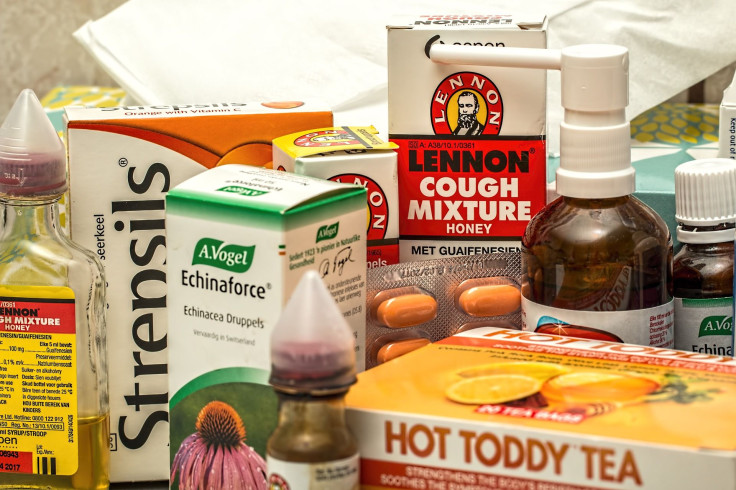Common Cold Have You Feeling Down? Here Are The Best Medications For Every Symptom

The common cold is the mosquito of medical conditions — it's annoying and can cause short-term misery, but probably won't do much damage. The next time you wake up to a pesky scratchy throat and a stuffy nose, learn which cold medicines are the right choice for the right symptoms, and which don't do much at all to alleviate your pain.
Symptom: Congestion (Stuffy Nose)
Nothing is more irritating than loss of sleep because you can’t breathe. Mouth breathing leads to a scratchy throat, and it’s the kind of situation that really makes you wish you’d appreciated your clear nasal passages when you had the chance. There is hope, though, in the form of decongestants.
Decongestants are over-the-counter medications meant to ease the blockage of a stuffy nose. Most work by causing the blood vessels in the nose to constrict and become narrower, therefore reducing swelling of the nasal lining. This swelling causes the blocked-up feeling. The active ingredient in the majority of decongestants is either phenylephrine or pseudoephedrine, so look for these when trying to relieve a stuffy nose. Though you don’t need a prescription for decongestants, medicines containing pseudoephedrine are now stored behind the pharmacy counter since the ingredient is commonly used to make the illegal drug methamphetamine (thanks, Breaking Bad).
Symptom: Runny Nose, Sneezing
If you’ve already used up a box of tissues before lunch, you’re familiar with the effects of a class of body chemicals called histamines. Histamines are produced as an immune response to foreign pathogens, and are meant to increase the permeability of capillaries to white blood cells, which allows the cells to engage whatever foreign invader is making you sick. The result is a runny nose, watery eyes, and sneezing.
Drug manufacturers came up with the cleverly named antihistamines to fight histamines. The most popular over-the-counter antihistamines include chlorpheniramine and diphenhydramine, which block histamine processes. Side effects can include drowsiness and a dry nose, eyes, and mouth.
Symptom: Cough
Can’t stop coughing? Hacking away can disrupt both your day and the activities of those around you (not to mention it can spread germs all over the place), so luckily, there are a couple options to keep coughs at bay.
The first type of cough relief comes from cough suppressants, like dextromethorphan. This medicine works by suppressing the signals in the brain that trigger the reflex to cough. Also known as DXM, the drug has recently become popular as a recreational drug due to its sedative and dissociative properties when taken in high (and dangerous) doses. When used properly, though, cough suppressants can give the user relief.
The second type of medication for coughing is a class of drugs known as expectorants, which break up chest congestion by thinning the mucus in the airways. Guaifensin is a good active ingredient to look for if you’re trying to ease the intensity of your coughs and get rid of phlegm. Drinking plenty of water is recommended when taking this type of medication, as it helps thin the mucus even more.
Symptom: Fever, Aches, Sore Throat
Ah, fevers and pain. Perhaps the most debilitating of all cold and flu symptoms, fevers and body aches often pair up in an effort to banish all attempts at productivity while ill. Add in a sore throat and you may as well give up on doing anything other than watching Netflix and eating chicken noodle soup.
Relief is possible, though, thanks to medications like acetaminophen and ibuprofen. Both of these medications are good for pain management, though they differ in side effects, fever-management potential, and their potential for toxic interactions with other substances. For example, pregnant women and children under 6 months should avoid ibuprofen and go for acetaminophen instead. Meanwhile, many experts suggest ibuprofen may be better for overall management of a fever. The two medications come under an array of popular brand name products, but reading ingredient and warning labels should give you a good idea of when you’re safe to use one or the other.
Published by Medicaldaily.com



























